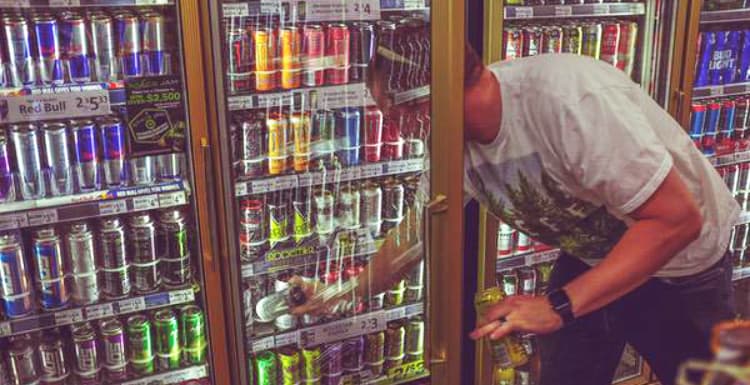
Another afternoon workday, another energy crash. It’s 3 PM and you finished lunch a couple hours ago but you’re hungry and tired and there’s a ton of work to finish before you call it a day. If you don’t want to rely on coffee for an energy boost, should you reach for a bar or energy drink? Here’s Chef V’s take…

If you’re training for an Ironman/Ironwoman, go for it, have an energy bar because you’re going to need it. But for most people, relying on energy bars, meal replacement bars, protein bars and energy drinks are false friends.
I’ll explain what I mean by that. After you eat a bar or have an energy drink, you might feel like you can power through for the rest of the day. But as soon as the effects of the sugar wear off—and most bars have tons of sugar—what goes up must come down. In other words, you end up having an energy crash.
So how much sugar is in the typical energy bar, even those that make consumers believe they’re healthy because they’re labeled as “organic” “all-natural” or “preservative-free” and “gluten-free.”
According to the Atlanta Journal Constitution, 23 top-selling energy bars have more sugar than a regular-sized Snickers! And get this … all 23 bars contain over 20 grams of sugar. Moreover, some bars contain 100 percent or close to 100 percent of the suggested maximum daily amount of sugar, which is:
- 24 grams for women
- 36 grams for men
As for relying on energy/sports drinks to rely on a pick-me-up so you have the energy to go to the gym after work, well, it’s no different. In fact, according to SF Gate, an eight-ounce serving of the average sports drink contains between 24 and 29 grams of sugar. That’s over 2 rounded tablespoons of sugar per serving. To make matters worse, many people don’t just drink an 8-ounce serving. They have an entire 16-ounce or 32-ounce serving.
And it doesn’t take a certified nutritional therapist like yours truly to tell you that all that sugar is bad for you. Bad for your waistline. Bad for your pancreas. Bad for your teeth. Bad for mood stability, blood sugar levels and everything else.

Healthy Alternatives To Bars and Energy Drinks
Instead of bars and energy drinks, what can you have to power through those last few hours of the workday before you gotta go home and cook dinner, take care of the kids and everything else?
Here’s some options:
Eat a bigger lunch
Many people make the mistake of not eating enough at lunch. I’m sorry, but a sandwich might be quick and tasty but 2 slices of bread with a turkey slice, a small tomato and iceberg lettuce is not a balanced meal.
Instead, eat a European-style lunch. In Europe, lunch is typically the biggest meal of the day. Fill your plate up with a healthy grain like wild rice, quinoa, whole-wheat couscous with some lean protein (fish or chicken) and some avocado to get those healthy fats. If you’re eating a salad for lunch, make sure there’s enough protein and healthy fats to fill you up until dinner.
After lunch, take a 5-10 minute walk to stabilize your blood sugar levels.

Extra Serving of Green Drink
My secret to having a kick-ass morning is drinking a tall glass of lemon water first thing, followed 30 minutes later by an 8-ounce serving of Green Drink.
If you follow this ritual every day and eat a substantial lunch, you should have steady energy in the afternoon. But if not, try having an extra serving of Green Drink and a healthy snack like berries and nuts. You won’t feel a jolt of energy like you would from drinking Jolt cola, but you should feel energetically stable.
Chef V’s Low-Sugar Electrolyte Drink
If you’re addicted to energy and sports drinks, I can wean you off with a healthier alternative. In case you missed this recipe in my article about electrolytes,
here’s how you can easily and quickly make a drink that’ll give you some pep in your step:
Ingredients:
- 1 cup coconut water
- 1 cup cold water
- 1/2 cup fresh squeezed orange or mandarin
- 1 tbsp lemon juice
- 1 tsp baking soda
- 1/2 tsp salt
- 1 tbsp coconut sugar
Method:
Blend in a blender. Serve cold. Keep for up to 2 days in the fridge.
Yerba Mate and other natural energy drinks
Finally, if you can’t quit caffeine altogether, you can drink Yerba Mate, which contains about half the amount of caffeine as coffee but is all-natural and rich in nutrients.
You can learn more about Yerba Mate and a few other alternatives to sports-and-energy drinks here.
Here’s to fueling your day the healthy way!
Until next time,
Veronica “V” Wheat,
Founder, ChefV.com
















